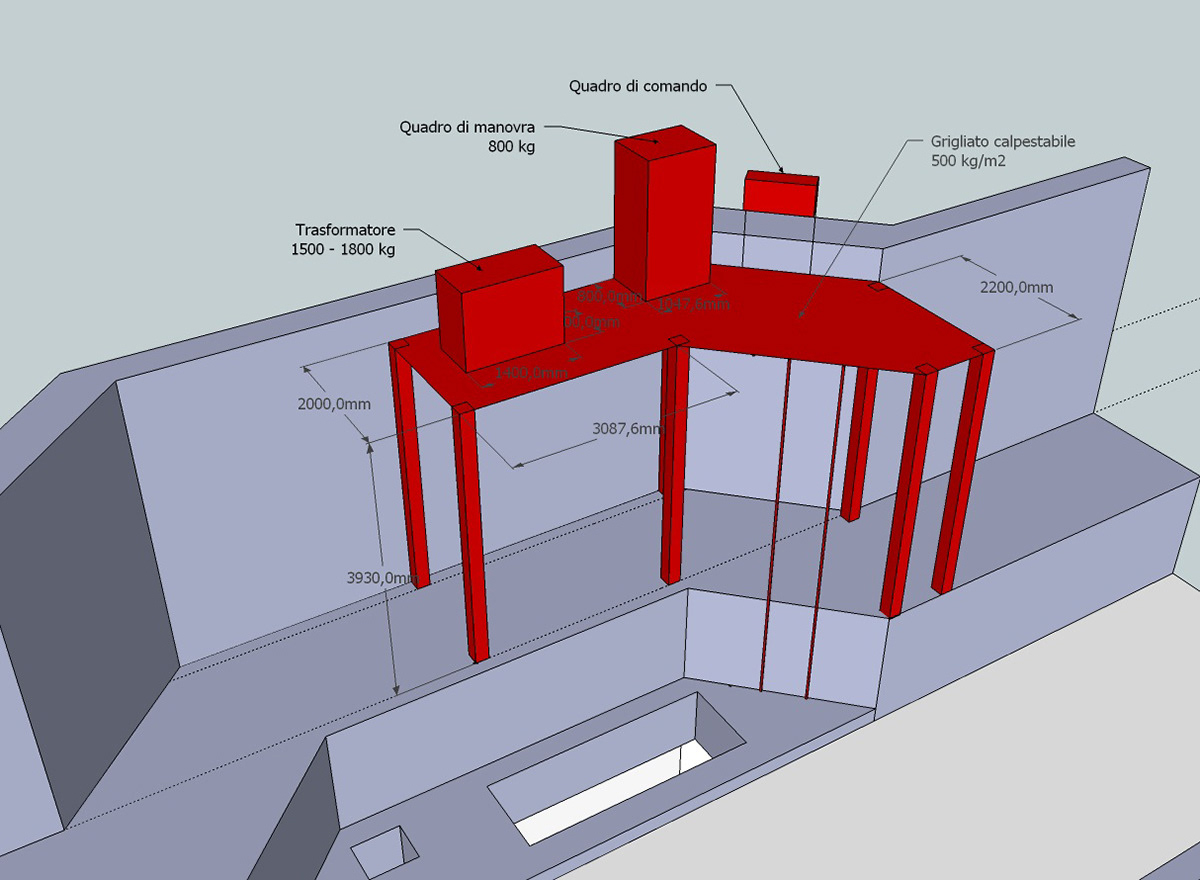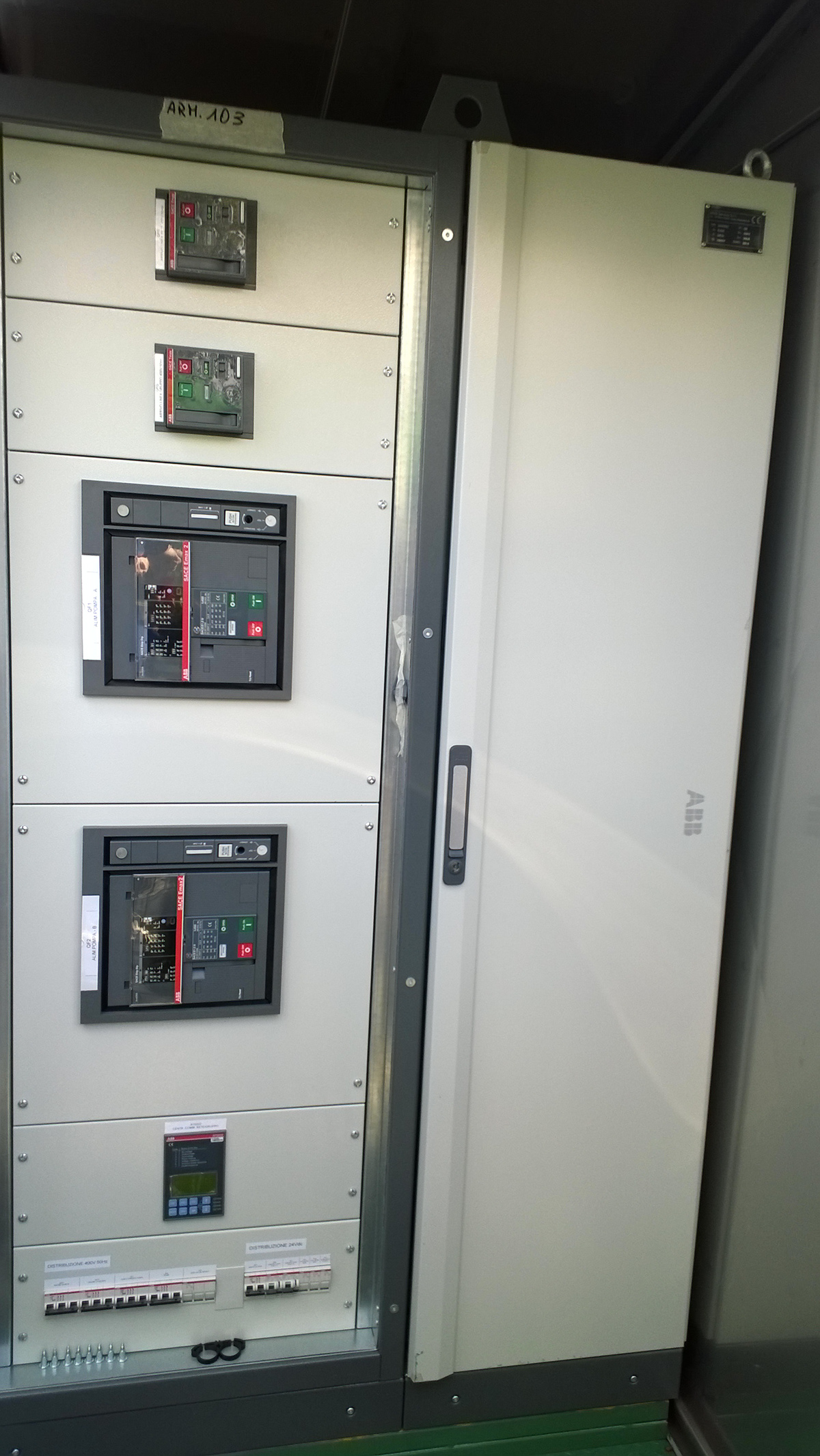The activity was performed on Brindisi Power Plant.
Brindisi Power Plant is a multi-fuel thermal power plant, made out of 4 unit, 660 MW gross power each. Each unit is capable of firing both coal and heavy oil. For competitiveness reasons, coal is the fuel of choice.
Coal is delivered to the power plant by means of bulk carrier ships, that are unloaded in the Harbour of Brindisi, located in the natural gulf where also the city is settled.
The plant is located 12 km far from the city of Brindisi. In order to move the coal from the harbour to the plant, it was decided to build an infrastructure called "Asse Attrezzato Policombustibile" (AAP).
8 km of the overall 12 km of lenght run in an open roof, underground trench. The trench also hosts a 2 lane service way and a maintenance street. Alongside the streets, pipes and cableways are installed.
With such an arrangment, the partof AAP running in the campaign is totally hidden to the sight of an observer standing on the fields.

The main drawback of such an arrangement is the hydraulic risk. The AAP runs parallel to the coast of adriatic sea, and cuts the waterways that run from the land to the sea: to overcome this issue, many channel-bridges were built.
In the last years, the change of the weather and of the rain intensity increased the risks, and more than once floodings occurred, causing heavy damages, repairing costs, operational costs and outages.
Enel decided to mitigate such risk:
- applying passive defence systems (e.g. walls) in the points of AAP where water broke into the trench
- increasing the pumping system capabilities, to prevent, or quickly clear out the water coming from floodings.
I worked for the second part of the project, that is the development, design, specification, of an emergency pumping system.
The main goals of such system are:
- high capability (more than 400 mc/h)
- high reliability (possibility to operate the system with the trench flooded)
- high flexibility (possibility to pump water possibily containign foreign objects)
- cost optimization
- safety for operators (accessibility in normal and emergency conditions)
The idea that was developed was to install 3 pumping stations in the 3 points where hystorically flooding occurred. Each pumping station is made out of:
- a metal structure, that elevates the electrical equipments above the highest level reachable by the water. This structure also enables the operators to operate the electrical equipments and the valves, also when the trench is flooded. This was made possibile by the double accessibility: from the service road inside the trench and from the regular roads outside the trench, on the campaign.
- a couple of high performance pumps: in order to respond to the need of high flexibility and mass flow, very peculiar pumps were specified, featuring vertical submersible motor with jacket cooling, pump rotor with very wide free passage, corrosion resistance, ability to start DOL. The pumps were finally supplied by KSB, Amarex series.
- a carbon steel piping ang valving system, accessible in all condition, that allows the operator to choose which of the two pump use, and which of the pipeline use to clear out the water.
- an electric system capable of working in all condition, made out of: Medium voltage connection to the electric system, A MV/LW oil cooled trasformer, one for each station, installed locally, above the steel structure; a LV switchboard, Power center type, capable of operating the pumps; a local panel for command and control of the system
- a connection to the existing automation system, for remote supervision and actuation
- a provisional connection for a mobile diesel generator, to be used in case of failure of MV connection
After the specification, a tender was lunched. Finally the job was awarder to Leucci Costruzioni Spa, in cooperation with MEG Service Srl.
During the job, I followed up the engineering activities and also the FAT and SAT. A final support was given for the system startup.
Picture below shows a preliminary 3d drawing, showing the arrangement of the equipments.

The picture below shows one of the pumping stations. This one is made of two floors. First floor makes in possible to operate and maintain the valves. The second floor hosts the transformer, the power center switchboard (inside the a stainless steel hood) and the control panel (on the right, partially hidden by the hood). Acces is granted by a small ladder, accessible from the ground level.
Same station, but seen from a different angle
Detailled view of the power center: the panel is composed with the new ABB System Pro steel panel, and is equipped with new ABB Sace Emax2 breakers, launched in 2014. Picture also shows the two Molded case Circuit breaker, Tmax family, used to feed the panel from the trasformer or emergency generator. The two breakers are equipped with motor operated actuator, and are commanded by the Automatic Changeover PLC from ABB, installed at the bottom of the panel

Picture Below shows a typical local control panel. Stainless steel casing is used, in order to obtain the highest corrosion resistance possible.
The panel festures start, stop, pump selection, local/remote selection, level measure functions.
Below the protective hood for Power Center Switchboards is shown. It is made out of AISI 304 steel. The hood was obtained by 15/10 mm stainless steel sheets, only by means of cutting, bending, and TIG welding.

The transformers are oil cooled type. Both LV and MV connection are made with quiche disconnects, that make it possible tho disconnect and replace quickly the machine. Below the top hood, a thermostat protects transformer from high temperatures.
